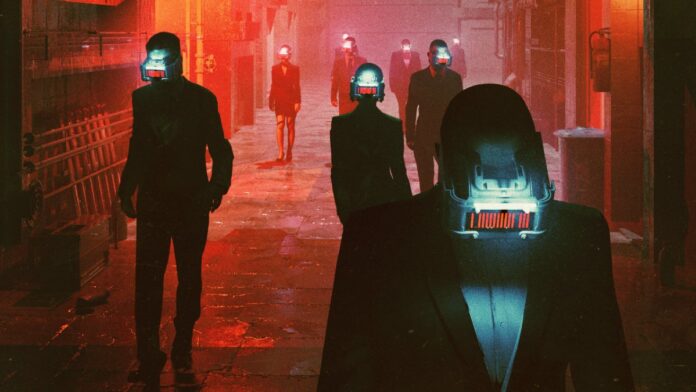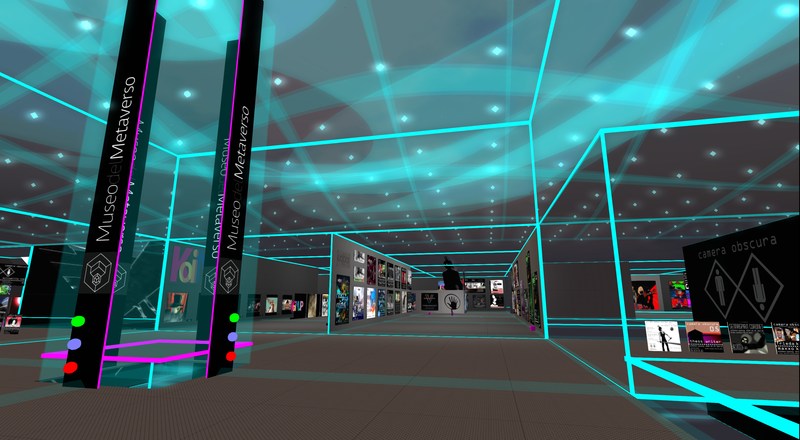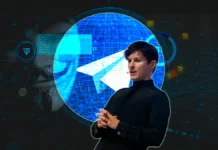
In 1992 author Neal Stephenson coined the term “metaverse” and talked about lifelike avatars meeting in realistic 3D buildings and other virtual reality scenarios. Since then, several advancements have served as stepping stones toward creating a true metaverse, an online virtual world that combines augmented reality, virtual reality, 3D holographic avatars, video, and other forms of communication.
As evolution progresses in the Metaverse, it will provide you with a hyper-real alternate universe in which you can simultaneously coexist with real and virtual reality. In online gaming universes like Fortnite, Minecraft, and Roblox, indications of the Metaverse already exist. And the corporations behind those games want to be a part of the Metaverse’s progress. In this article, learn in detail what the Metaverse is and how it will change our view of the world and virtual reality.
Contents
What Is The Metaverse?
The Metaverse is a fictitious version of the Internet that allows for permanent online 3-D virtual worlds to be accessed using traditional personal computers that combine augmented reality, virtual reality, 3D holographic avatars, video, and other forms of communication. The word “metaverse” originated as a combination of “meta” and “universe” in the 1992 science fiction novel Snow Crash by author Neal Stephenson. It has now gained a reputation as a promotional phrase and a method of creating enthusiasm for public relations objectives by making vague statements about future initiatives.
Metaverses have previously been deployed in a limited form in video games such as Second Life. Some Metaverse iterations include the merging of virtual and real realms as well as virtual economies. The current focus of metaverse development is on overcoming technology restrictions using virtual and augmented reality technologies.
In simple terms, Metaverse has the potential to significantly transform technological industries by bringing virtual reality (VR)-based wearables. These wearables will transport people to a different virtual world. As a result, people can engage without having to endure long trips, breathe filthy air, dress up for various events, view movies, or socialize with friends. Instead, we will have virtual alternatives without the inconveniences of the actual world.
Metaverse seems to be a very relaxed and entertaining technology. Still, many concerns about information privacy and user addiction also arise in the Metaverse due to the issues confronting the social media and video game industry.
Who Coined the Term Metaverse?

In 1992 in the dystopian science fiction novel Snow Crash, Neal Stephenson used the phrase “metaverse” to depict a virtual reality-based internet replacement. In this novel, humans, as avatars, interact with each other and software agents in a three-dimensional virtual reality that employs the metaphor of the actual world. For example, a 100-meter-wide road called The Street, which spans the entire 216 km circumference of a featureless, black, perfectly spherical planet, appears to its users as an urban environment developed along with a perfectly spherical earth. The Global Multimedia Protocol Group, a fictitious branch of the genuine Association for Computing Machinery, holds virtual real estate. It may be purchased and structures built on it.
Users can access the Metaverse via personal terminals that transmit a high-quality virtual reality display onto goggles worn by the user or via grainy black and white public terminals in booths. The users in the first-person experience. Stephenson portrays a subculture of people who choose to be constantly linked to the Metaverse; their hideous look earns them the moniker “gargoyles.”
Individual users appear as avatars of any shape or size within the Metaverse, with the only constraint being height to prevent individuals from strolling about a mile high. The Metaverse’s transportation is confined to analogs of reality by foot or vehicle, such as the monorail that covers the whole length of the Street, stopping at 256 Express Ports spaced equally at 256 km intervals and Local Ports spaced one kilometer each.
Technology Behind Metaverse
The Metaverse is a planned addition to existing internet technology, so general-purpose computers and cellphones, augmented reality (AR), mixed reality, virtual reality (VR), and virtual world technologies are all potential access points to the Metaverse. Facebook, which purchased virtual reality firm Oculus in 2014 and announced ambitions to construct a 3-D social space to link various services, is one example of business and commercial interest in metaverse-related research and technology.
Specialized Technological standards of Metaverse
Common Specialized Technological standards, interfaces, and communication protocols are being developed to facilitate interoperability (the ability of computer systems or software to exchange and make use of information) between virtual environments, Below are the most technological standards:
- Infrastructure: Connectivity technologies like 5G, Wi-Fi, cloud, and hi-tech materials like GPUs.
- Human interface: VR headsets, AR glasses, haptics, and other technologies users will leverage to join the Metaverse.
- Decentralization: Blockchain, artificial intelligence, edge computing, and other democratization tools.
- OpenXR: Application programming interfaces (APIs) interfacing with VR and AR devices.
- Virtual Worlds: Standard for Systems.
- Information technology: Virtual world object characteristics.
- Spatial computing: 3D visualization and modeling frameworks
- Creator economy: An assortment of design tools, digital assets, and e-commerce establishments
- Discovery: The content engine driving engagement, including ads, social media, ratings, reviews, etc.
- Experiences: VR equivalents of digital apps for gaming, events, work, shopping, etc.
- IETG: Immersive Education Technology Group.
- WRAP: Virtual World Region Agent Protocol.
- The Metaverse Roadmap.
- The Open Source Metaverse Project.
- X3D: The successor to the Virtual Reality Modeling Language (VRML) as the open standard for interactive real-time 3D (web3D). X3D is an accepted standard for integrating virtual and augmented realities with the Web.
Below is an example of a Metaverse:

The Metaverse Museum is a Second Life initiative designed to enhance the artistic legacy produced in virtual environments. Rosanna Galvani created it in September 2007. The museum relocated to OpenSim in the Grid Craft in 2010. The Metaverse Museum has been housed in two Grid Craft islands/simulators since October 2014. The museum’s main collection and several temporary exhibitions are housed on the island of MdM. The Uqbar simulator was created to be a fun and friendly space for museum visitors. But, because of the partnership of László rdögh Diabolus aka Velazquez Bonetto, the creator of the Cybernetic Art Research Project, it has been enhanced with cultural and creative substance (CARP).
Limitations of the Technological standards
The lack of high-quality graphics and mobility are the limitations resulting from the cost-design balance, and Metaverse’s reliance on virtual reality technology limits its growth and widespread acceptance. Thus the visual quality of lightweight wireless headsets is inferior to that of bulkier, wired VR goggle systems, and the headgear, which will cost around US$799 plus controllers, is another barrier to widespread adoption of the technology.
Applications of Metaverse
- Gaming: You can play games as your desired character in Metaverse. In gaming, soon you will be able to feel, touch, and interact with the 3D materials, people, and textures.
- Virtual Home: It seems meta’s first project is Virtual Home. According to Zuckerberg, we can construct any digital area or the 3D virtual world around us.
- Concerts: Filmmakers and musicians may hold Concerts in the Metaverse digital realm. Millions of fans will be able to attend the performance via digital means. It will also alter the movie universe.
- Traveling and meeting up: In Metaverse, you can meet with your friends and family virtually and even share a virtual meal with them.
- Buying and selling: In the Metaverse, you can buy and sell everything using cryptocurrencies.
Meaning of Metaverse in Crypto-Currencies
What is the meaning of Metaverse in Crypto-Currencies? Let us understand this with an example; in the real world, we use fiat currency, such as rupee-dollar, etc., as a store of value and a means of exchange for buying and selling anything; same in the virtual world we’ll buy or sell our artwork, virtual land, etc. using cryptocurrencies.
Therefore, it’s difficult to envision the Metaverse without cryptocurrencies; it becomes a requirement rather than an option in a world where speed, transparency, and security will be essential. This is why cryptocurrencies are the ideal trade means for this rapidly evolving virtual society.
So frequent transactions such as selling your virtual land and immediately purchasing a new one require decentralization and transparency, where the power to approve and validate transactions rests with every participant in the network collectively. Cryptocurrencies use highly sophisticated cryptography technology for encryption and fund protection so users can be confident that their funds are safe when they operate on a public ledger like blockchain where every transaction they make is irreversible, traceable, and secure. Thus it can become a rapid means of exchange and permanent digital evidence of ownership in the Metaverse.
Time Traveling in the Metaverse
Inside the Metaverse, you can go into any previous timeline or travel to any point. You may construct a virtual environment of any prior timeline in Metaverse. For example, you can build an old city or any other location in your own space. You will also be unable to meet your actual future offspring on the Metaverse. Because you will be traveling into the virtual timeline, it doesn’t mean you can create the Grandfather paradox or alter any time travel paradox.
Future of Metaverse
Like any new tech ecosystem, the future of the Metaverse will be determined by how simple it is for individual users. Soon users will be able to use crypto tokens produced by the organizations that support these virtual connections to acquire digital avatars and virtual lands, organize parties for loved ones, and meet friends virtually. So it will be interesting to see how convenient it will be to use cryptocurrency in the Metaverse.
According to Dominic Ryder, CEO of vEmpire, Metaverse is the next logical step in the way people connect digitally, and the possibilities are limitless. There are choices such as the Sandbox for creative minds and gamers that want to build experiences. There is also a Decentraland, quickly becoming a center for many activities.
Today, an embryonic form of the Metaverse exists, with digital items like Non-Fungible Tokens (NFTs) representing popular art and digital artifacts being devoured by investors and crypto enthusiasts. With significant firms like Meta Platforms Inc. entering this arena and firmly indicating that it may be the new future, it is only a matter of time before other entities follow suit. It has the potential to lead to an exponential growth of the Metaverse’s bounds, releasing massive amounts of value previously unknown to consumers and investors alike.
Concerns and Criticism of Metaverse
Metaverse will completely change virtual reality. However, companies engaged in the Metaverse will likely acquire users’ personal information through wearable devices and user interactions, and information privacy will be a big issue. In addition, Facebook intends to continue targeted advertising within the Metaverse, prompting new concerns about spreading disinformation and losing personal privacy.
Another issue to be concerned about is user addiction and inappropriate social media use. Internet addiction illness, social media addiction, and video game addiction can have long-term mental and physical consequences, such as sadness, anxiety, and obesity. Experts are also concerned that the Metaverse, like existing internet technologies, may be utilized as an escape from reality.
The Metaverse may amplify the social effects of online echo chambers and technologically alienated settings. Furthermore, because metaverse innovations may be made to modify virtual worlds depending on each person’s opinions algorithmically, the Metaverse may corrupt users’ perceptions of reality with biased information to retain or boost engagement.
Conclusion
The Metaverse is becoming a reality, and our existence will become virtual in the coming days due to this technology. Virtual reality will evolve and advance our experiences to a new level. Many individuals will find work due to this technology, and millions will be introduced to a new technical sensation. However, the question is, it has been over three decades since the Internet’s inception, yet we are still far from reaching full Web 2.0 adoption, so are we ready for Web 3.0? To ensure the success of the Metaverse, stakeholders must work on lowering obstacles, user privacy, user addiction, and resolving user skepticism. However, every technology has its drawbacks and advantages, so we can identify them when Metaverse becomes a reality.
Sources
- Active Worlds for Windows (1995). (n.d.). MobyGames. Retrieved December 17, 2021, from https://www.mobygames.com/game/windows/active-worlds
- Brown, D. (2021, October 28). What is the ‘metaverse’? Facebook says it’s the future of the Internet. Washington Post. Retrieved December 13, 2021, from https://www.washingtonpost.com/technology/2021/08/30/what-is-the-metaverse/
- Combs, V. (2021, October 29). The Metaverse: What is it? TechRepublic. Retrieved December 20, 2021, from https://www.techrepublic.com/article/metaverse-what-is-it/
- Decentraland. (2020, January 15). Decentraland Public Launch. Retrieved December 17, 2021, from https://decentraland.org/blog/announcements/decentraland-announces-publich-launch/
- Feltham, J. (2020, August 18). HTC CEO Cher Wang To Talk “Realizing Vive Reality” At MWC Keynote. UploadVR. Retrieved December 10, 2021, from https://uploadvr.com/vive-reality-mwc-2019/
- IEEE VW Standard Working Group. (n.d.). Web Archive. Retrieved December 20, 2021.
- Information Dynamics in Virtual Worlds. (n.d.). Google Books. It was retrieved on December 20, 2021.
- ISO/IEC 23005–4:2011. (n.d.). ISO. Retrieved December 20, 2021, from http://www.iso.org/standard/54988.html?csnumber=54988
- Kastrenakes, J. (2020, November 20). Roblox goes public so that it can build a bigger metaverse. The Verge. Retrieved December 16, 2021, from https://www.theverge.com/2020/11/19/21578491/roblox-ipo-announced-dau-increase-pandemic
- L. (2021, March 3). “You can feel like you’re in the same place”: Microsoft Mesh powers shared experiences in mixed reality. Innovation Stories. Retrieved December 20, 2021, from https://news.microsoft.com/innovation-stories/microsoft-mesh/
- Media Grid: Immersive Education Technology Group (IETG) Charter. (n.d.). Web Archive. Retrieved December 20, 2021, from https://web.archive.org/web/20110908045542/http://mediagrid.org/groups/technology/grid.ied/
- Metaverse Roadmap: Pathways to the 3D Web. (n.d.). Metaverseroadmap. Retrieved December 20, 2021, from https://metaverseroadmap.org/
- Milmo, D. (2021, October 29). Enter the Metaverse: the digital future Mark Zuckerberg is steering us toward. The Guardian. Retrieved December 20, 2021, from https://www.theguardian.com/technology/2021/oct/28/facebook-mark-zuckerberg-meta-metaverse
- Needleman, S. E. (2021, October 16). The Amazing Things You’ll Do in the ‘Metaverse’ and What It Will Take to Get There. WSJ. Retrieved December 14, 2021, from https://www.wsj.com/articles/the-amazing-things-youll-do-in-the-metaverse-and-what-it-will-take-to-get-there-11634396401
- Newton, C. (2021, July 22). Mark Zuckerberg is betting Facebook’s future on the Metaverse. The Verge. Retrieved December 11, 2021, from https://www.theverge.com/22588022/mark-zuckerberg-facebook-ceo-metaverse-interview
- Orland, K. (2021, November 7). So what is “the metaverse,” exactly? Ars Technica. Retrieved December 12, 2021, from https://arstechnica.com/gaming/2021/11/everyone-pitching-the-metaverse-has-a-different-idea-of-what-it-is/
- Roose, K. (2021, November 10). Why Did Facebook Become Meta? The New York Times. Retrieved December 19, 2021, from https://www.nytimes.com/2021/10/29/technology/meta-facebook-zuckerberg.html
- Sharwood, S. (2021, May 18). South Korea has created a ‘metaverse alliance’ to build an open national VR platform. The Register. Retrieved December 20, 2021, from https://www.theregister.com/2021/05/18/south_korea_metaverse_alliance/
- Shou, D. (n.d.). I Want My Daughter to Live in a Better Metaverse. Wired. Retrieved December 20, 2021, from https://www.wired.com/story/i-want-my-daughter-to-live-in-a-better-metaverse/
- Sidhwani, P. (2021, September 3). The History Of Roblox: From 2004 Until Now. TechStory. Retrieved December 15, 2021, from https://techstory.in/the-history-of-roblox-from-2004-until-now/
- Special, S. E. T. (2021, November 16). Metaverse and its connection with cryptocurrency. The Economic Times. Retrieved December 20, 2021, from https://economictimes.indiatimes.com/markets/cryptocurrency/metaverse-and-its-connection-with-cryptocurrency/articleshow/87741319.cms
- TechCrunch is part of the Yahoo family of brands. (2019, September 25). Tech Crunch. Retrieved December 18, 2021, from https://techcrunch.com/2019/09/25/facebook-horizon/
- Thomas, B. D. (2021, October 28). Facebook changes its name to Meta in the significant rebrand. BBC News. Retrieved December 20, 2021, from https://www.bbc.co.uk/news/technology-59083601
- Thompson, C. (2021, November 23). The Metaverse Is Already Here — It’s Minecraft – Debugger. Medium. Retrieved December 14, 2021, from https://debugger.medium.com/the-metaverse-is-already-here-its-minecraft-99c89ed8ba2
- Tidy, B. J. (2021, November 5). Zuckerberg’s Metaverse: Lessons from Second Life. BBC News. Retrieved December 15, 2021, from https://www.bbc.com/news/technology-59180273
- Warren, T. (2021, November 2). Microsoft Teams enters the metaverse race with 3D avatars and immersive meetings. The Verge. Retrieved December 20, 2021, from https://www.theverge.com/2021/11/2/22758974/microsoft-teams-metaverse-mesh-3d-avatars-meetings-features
- Webster, A. (2021, March 18). Fortnite’s experimental story attempts to create ‘the entertainment experience of the future.’ The Verge. Retrieved December 18, 2021, from https://www.theverge.com/22338403/fortnite-story-narrative-interview-donald-mustard-epic-games
- X3D Specification, ISO/IEC 19775–1:2004 — Part 1: Architecture and base components. (n.d.). Web 3d. Retrieved December 20, 2021, from https://www.web3d.org/documents/specifications/19775-1/V3.0/Part01/Architecture.html
- XR Today. (2021, December 2). Who is Building the Metaverse? A Group of 160+ Companies, and You. Retrieved December 21, 2021, from https://www.xrtoday.com/virtual-reality/who-is-building-the-metaverse-a-group-of-160-companies-and-you/
FACT CHECK: We strive for accuracy and fairness. But if you see something that doesn’t look right, please Contact us.
DISCLOSURE: This Article may contain affiliate links and Sponsored ads, to know more please read our Privacy Policy.
Stay Updated: Follow our WhatsApp Channel and Telegram Channel.













